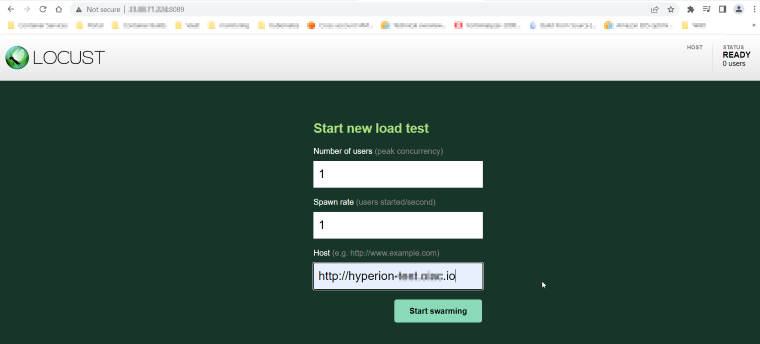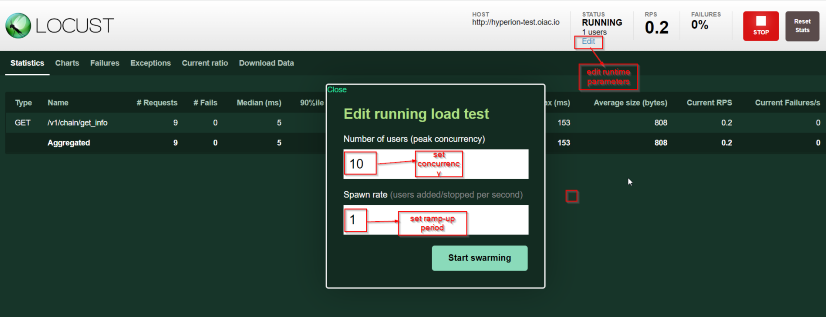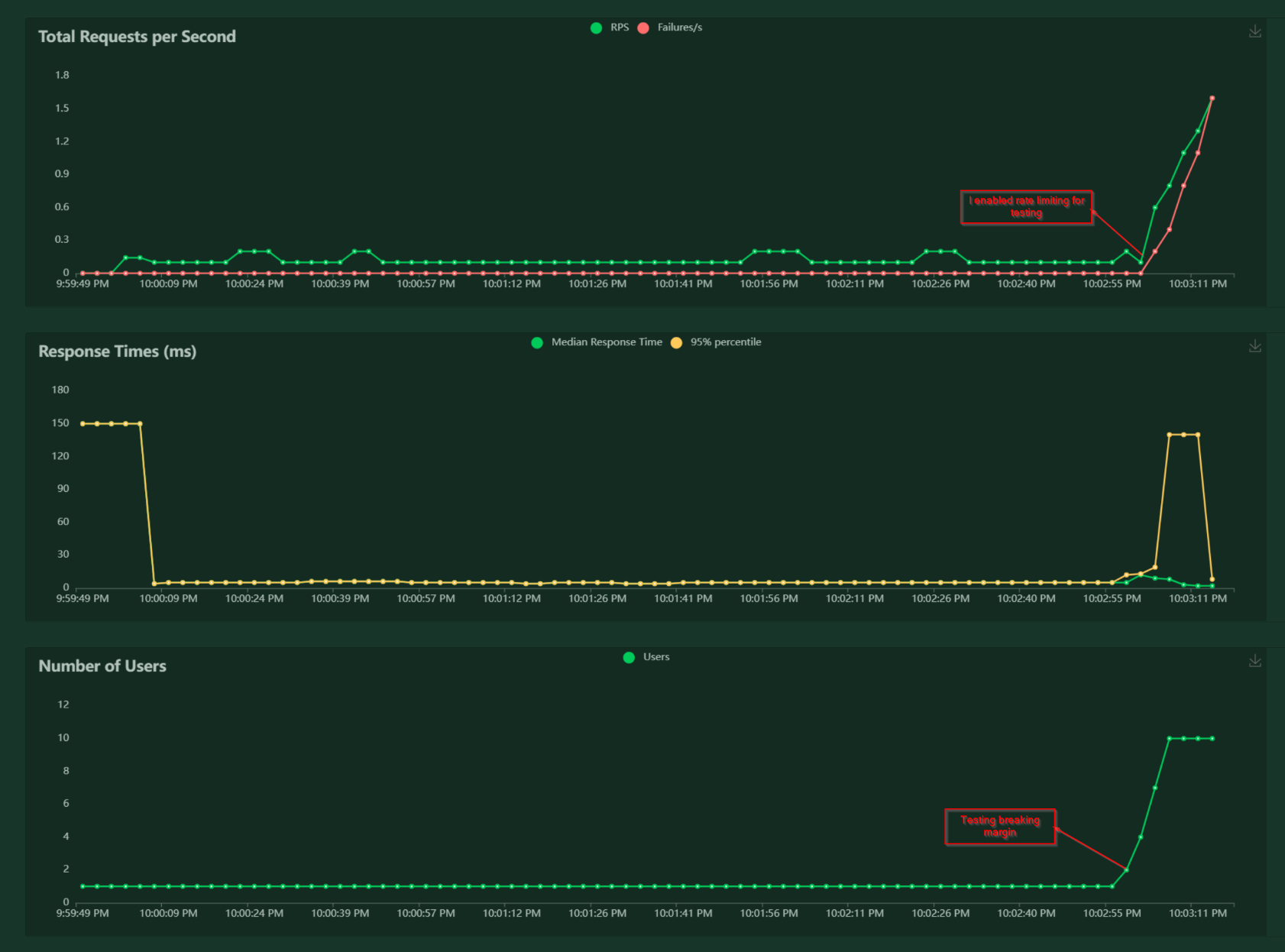Locust is an open source load testing tool, which is usefull for load testing against your API's to understand throughput and mitigate API abuse
The following will be covered here
- Stage the directory for locust
- Configure a basic test using the Locustfile.py
- Deploy Locust as a single container
- Run a load test using the Locust interface
- Deploy Locust Master and slaves as a microservice - not yet complete
- Configure a load test against Atomic API - not yet complete
- Configure a load test against Hyperion API - not yet complete
- Configure a load test against History API - not yet complete
Configure a basic test using the Locustfile.py
You will stage the python module and import to Locust to define your test. In this example it will perform a single get method against your specific URL+(/v1/chain/get_info). Note that this file needs to be mounted when starting the container service
from locust import HttpUser, task, between
class QuickstartUser(HttpUser):
wait_time = between(5, 9)
@task
def getAPI(self):
self.client.get("/v1/chain/get_info")
self.client.get("/v1/chain/get_table_rows")
self.client.get("/v1/chain/get_info")
Deploy Locust as a single container
docker run -p 8089:8089 -v $PWD:/mnt/locust locustio/locust -f /mnt/locust/locustfile.py
Response =>
[2022-07-12 18:59:48,317] 425d50cb7761/INFO/locust.main: Starting web interface at http://0.0.0.0:8089 (accepting connections from all network interfaces)
[2022-07-12 18:59:48,326] 425d50cb7761/INFO/locust.main: Starting Locust 2.10.1
- The application will bind to port 8089 which will automatically be exposed to the operating system
- If you would like to access the GUI for Locust remotely, be sure to enable it on your server firewall
Run a load test using the Locust interface
You can access Locust by hitting your public/private ip on the exposed port above

Run Locust

Change runtime parameters

View results
